Local News
Gray Academy grad Dylan Kagan first ever Gray Academy student to be given “McDonald’s Leadership Award”

By BERNIE BELLAN
The McDonald’s Leadership Award is awarded to 16 students (eight boys and eight girls) annually who “demonstrate exceptional leadership in high school sport, school, and community involvement while also maintaining a minimum of 75% average.”
McDonald’s awards each recipient a $1,000 scholarship.
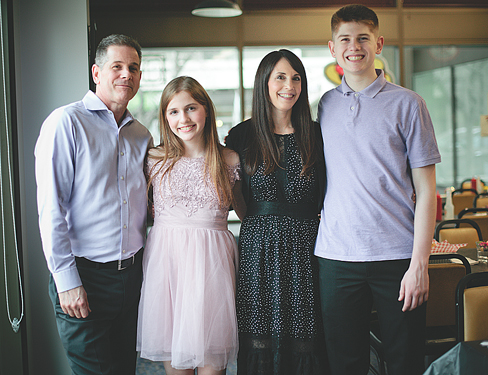
The Kagan family (l-r): JAMIE, TALIA, KORI, DYLAN
Not only did Dylan maintain a 93% grade point average in Grade 12, he excelled in two different sports throughout his high school years: basketball and Ultimate (a sport that has become especially popular among under-30s and which involves throwing and catching a frisbee on a team). As well, Dylan found time to create a program called Project 2020 when he was Bar Mitzvah’d whereby basketballs were donated to inner city youth. He has continued to preside over that program and, to date, over 600 basketballs have been donated.
The son of Kori (Brown) and Jamie Kagan, one might say that Dylan comes by his athletic prowess honestly, as his father Jamie has been the athletic director at Gray Academy for years.
But, in speaking first with Kori, then Jamie, and finally Dylan himself, I was surprised to learn that up until Grade 5 Dylan didn’t have much interest in sports at all. According to his father Jamie, Dylan was primarily interested in video games – until Jamie decided he was going to get Dylan involved in sports – whether he wanted to or not.
“I was playing video games all the time,” Dylan agrees.
It was in Grade 5 that Jamie put Dylan into a basketball program. At that point, Dylan says, “I found a passion for sports.”
“I basically forced him,” Jamie says. “Then,” he continues, “in Grade 6 Dylan made the Junior Bisons.” (The Junior Bisons are a club team that plays other clubs. Players are grouped according to age and play teams with players of the same age. Jamie explains that the Junior Bisons have traditionally had the strongest teams at any age level.)
“That (making the Junior Bisons) was kind of a turning point for me,” Dylan explains. “It’s when I began to take sports seriously.”
Because the Junior Bisons have traditionally had such strong teams at every age level, starting from a young age Dylan was fortunate to be able to travel in both Canada and the U.S. to participate in tournaments. He says he’s been “to Nebraska, Ohio, Minneapolis” and elsewhere in Canada as well over the years, playing basketball.

Dylan with his zaide, Larry Brown
Beginning in Grade 11 though, Dylan concentrated on playing basketball for Gray Academy alone.
According to Jamie, Gray Academy has long had a tradition of strong basketball teams. “Dylan was part of our three-time AAA champion provincial basketball team – which, without COVID, would have been four-time this year.”
As well, Dylan was a second-team high school all-star basketball player in the entire province in Grade 11 last year. “Not a lot of Grade 11’s get that honour,” Jamie points out.
“He’s a very smart player,” Jamie notes. At 6’ 2” Dylan might be considered tall, but among elite basketball players of his age, he would be considered average height. His position, Jamie said, was as a “small forward”.
While he still continued to play basketball – for both the Junior Bisons and Gray Academy, when he was in Grade 11 Dylan decided to concentrate more on Ultimate.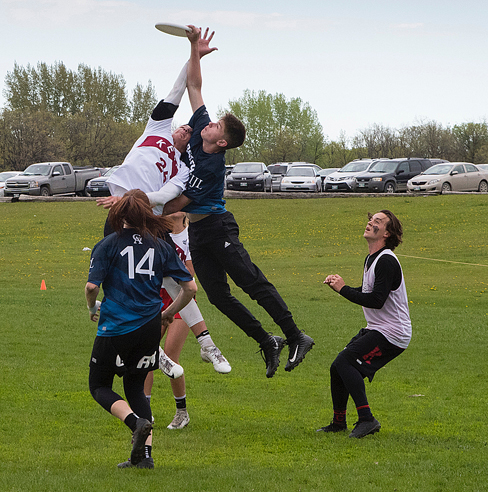
Dylan (in black) reaching for the frisbee in Ultimate
“Our Gray Academy Ultimate team is an extremely strong group,” Jamie observes. “They’ve always been in the top two or three in the province every year. They finished third in the Canadian high school national championship last year – second in the province. Dylan was a huge part of that.”
Starting in Grade 8, Dylan was playing on the provincial Ultimate team. “He was playing with kids in Grades 11 and 12,” Jamie observes.
“This year he made the under-20 national team” that would have gone on to represent Canada in Sweden in the world championship – which, “unfortunately was canceled,” Jamie adds.
I asked Dylan when he started to play Ultimate?
“It was in Grade 5,” he answers – “the same year I started to play basketball.”
I wondered whether he was tall as a kid – and whether maybe that gave him an edge that allowed him to excel at sports.
“I’ve always been decently average,” he suggests, “up until about Grade 9 or 10, when I had a real growth spurt.”
Outside of school, Dylan has been Athletic Council Chair at Gray Academy for the past couple of years, which is something that involved him in planning athletic activities and fundraisers.
When he was in Grades 7 and 8, Basketball Manitoba featured Dylan on its posters when it was raising money for inner city basketball programs. When he was Bar Mitzvah’d, Dylan had the idea to donate money from his Bar Mitzvah to purchase basketballs for inner city youth – and he’s been raising money for that cause every year since.
“He’s helped to raise money to donate over 600 basketballs,” Jamie says.
As well, Dylan started a tournament hosted at Gray Academy for students in Grades 6, 7, and 8, called the “Raider Rumbles Tournament”.
The fee for the tournament is one basketball from each player who participates. That’s one of the ways he’s been able to donate 600 basketballs.
“We host SJR (St. John’s Ravenscourt) every year; we host a team from Kenora,” Dylan says.
On top of all that Dylan volunteers at the West Broadway Youth Centre in a program called “Boys World” – which is a drop-in program for inner city youth.
One other interesting aspect to Dylan’s years of volunteering is that last year he was co-winner of the Bert Knazan Award at the Rady JCC Sports Dinner. (His co-winner, by the way, was Lauren Cogan, whom we profiled in our June 10 issue.) The award is presented “to a male and female Jewish teen athlete who has demonstrated athletic excellence, good sportsmanship, fair play and displayed consideration for others.”
Something else about Jamie Kagan that might help to explain Dylan’s excellent scholastic achievement: As well as being athletic director at Gray Academy, Jamie Kagan teaches math and science at the school (something he’s been doing for 25 years, he tells me, going back to his days at Joseph Wolinsky Collegiate on Matheson Avenue).
Jamie adds that for the past two years, in a national math competition for students in Grades 7 and 8, students from Gray Academy have not only finished first in Manitoba, “our Grade 8’s, this year, placed first in all of Canada.”
“When Dylan was growing up, he was number one in Manitoba in Grades 6, 7, and 8,” Jamie notes – “and in the top 10 in Canada.”
Consistent with his acumen in math, Dylan tells me that once he enters the Asper School he eventually hopes to become an actuary. (I tell him that’s a very good choice, as the two careers that hold the highest guarantees of employment are actuary and mortician.)
As disappointing as it must have been for Dylan not to be able to go to Sweden this summer to play for Canada in the world under-20 Ultimate championship, he will still be playing Ultimate when he begins studies at the University of Manitoba Asper School of Business this coming fall (assuming there are classes) and will still be a part of the national under-20 team.
There’s always a next year and, as Gerry Posner might say, Dylan Kagan has achieved the “ultimate” recognition for his all-round ability as a student, athlete, and volunteer.
Local News
Cheryl Hirsch Katz, Jewish Child and Family Service’s longest serving staffer, set to retire at end of the month
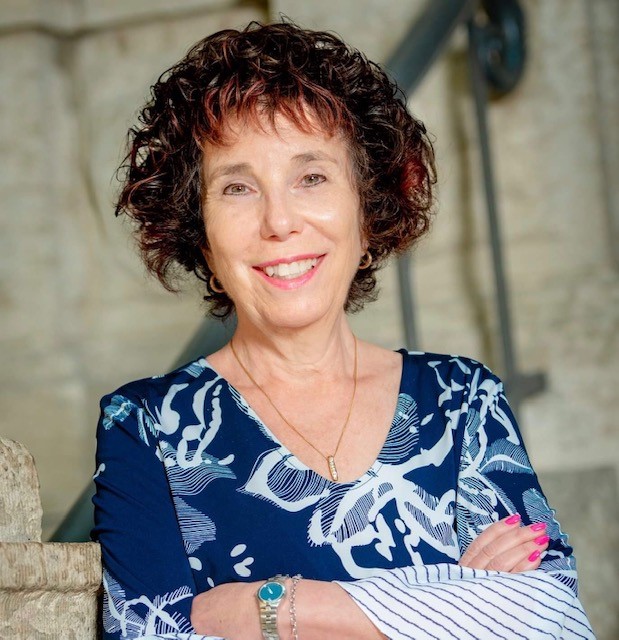
By MYRON LOVE “I loved working at Jewish Child and Family Service,” says Cheryl Hirsh Katz, who is due to retire at the end of June. “I have always appreciated the warm and welcoming atmosphere here. I feel that the people working here are my extended family. I am going to miss my colleagues”.
“I have derived great satisfaction over the years to have been able to help many people in our community of all ages through my work at JCFS,” she continues.
After 44 years at the agency, Katz, the longest-serving member of the staff, was given an appreciative send-off at the JCFS’s recent (June 23) Annual General Meeting at the Shaarey Zedek Synagogue.
The daughter of Art and Bess Hirsh, Cheryl grew up in Garden City. She attended Peretz School, then Jefferson Junior High and Garden City Collegiate. She joined the staff of JCFS in 1981, shortly after receiving her Bachelor of Social Work degree.
She earned an MSW in 1990.
“I chose to become a social worker,” she recalls, “because I always wanted to be able to help people.”
Katz was originally hired by JCFS to work with newcomers. After a couple of years, she was given responsibility for looking after the needs of older adults.
“I really enjoyed working in older adult services,” she says. “That is where I spent the bulk of my time at JCFS.”
After ten years as a case worker, she was promoted to a supervisory role. Later, she was also given responsibility for mental health and addictions programming and settlement services, while keeping the older adult files under her purview.
“As a supervisor, I wasn’t directly involved with individual clients,” she points out. “I was more involved with programming. Among the programs for seniors we organized were – for example – sessions on elder abuse, digital storytelling and memory loss.”
She notes that one of the trends she has seen over the last 44 years is that people are living longer and living in their homes longer. A lot more of our clients are living well into their 90s,” she observes. “We have had to continually expand our staff and the services we provide in order to accommodate the growing demands of an aging population.”
She also spoke of the mental health needs of seniors and aging Holocaust survivors.
She says that she has mixed feelings about leaving JCFS. “After so many years working full time, I am going to have to create a new routine,” she comments.
She notes that, now that she is retired, she will have more time to spend with her parents – who are in their 90s.
And then, there are the two dogs to look after. “I will have time now to try new activities,” she says. “ I might learn to play mah-jong.”
She speaks about maybe doing some traveling – although her husband, Murray, is still working full time.
(She and Murray have one daughter, Farah.)
“Retirement may also include some volunteering,” she adds.
It is quite likely, she will be continuing her association with JCFS but in a volunteer capacity.
Local News
Gray Academy students shine in provincial, national debating competitions
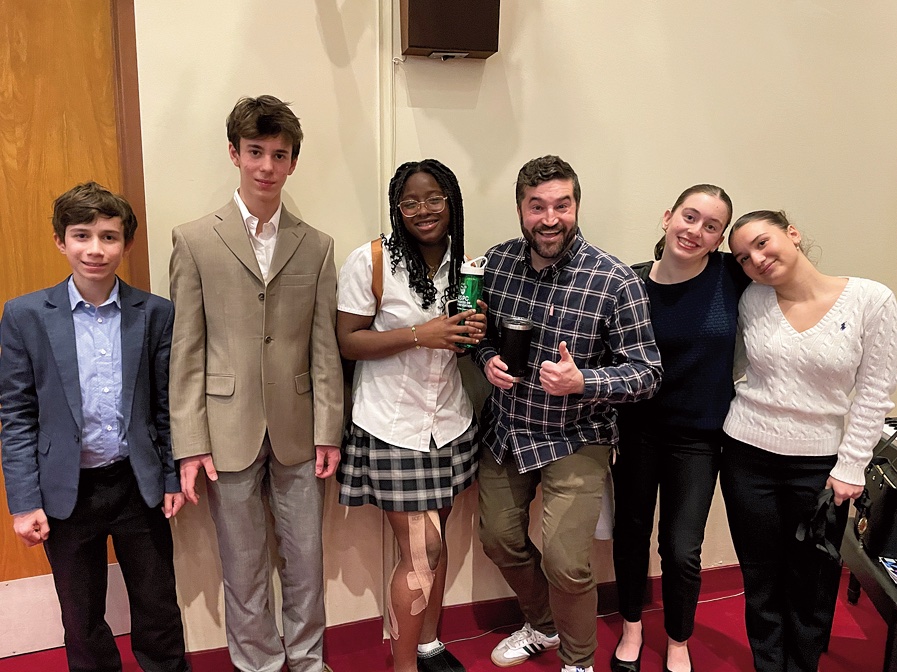
By MYRON LOVE It has been another good year for Gray Academy’s high school students who participated in provincial and national debating competitions. The best results were recorded by Grade 9 student Noa Mednikov, who finished fourth overall nationally, fourth in interpretive reading, and fifth in persuasive speaking at the junior National Public Speaking Championship in early May in Vancouver.
Last October, in the Junior Provincial British Parliamentary Championship – which was held at St. John’s-Ravenscourt – Noa and her partner, Raya Braunstein, finished third as a team while Raya placed third in individual debating.
Their fellow Grade 9 student Maxim Moscalenkov tied for first in persuasive speaking in Vancouver, while the Gray Academy team of Gabe Tapper and Aaron Koplovich finished fifth. Aaron also finished fifth in his individual debate.
Earlier, in March, Maxim finished fifth in the Provincial Juniors debating competition, which was held at Balmoral Hall He and his debate partner, Nate Shenkarow, finished seventh among the teams entered. Last November, he and partner, Ethan Tenenbein, finished seventh in the Junior Prepared Tournament – just behind the Gray Academy team of Nate Shenkarow and Jack Kay.
At the senior high level in that competition, the team of Jacob Tenenbein and Jonah Novoseller finished fourth and Jacob was recognized as fifth best in an individual capacity. Jonah and Jacob also paired up to win the Asper Cup, which was held at their home school.
Jacob represented Manitoba at the Junior National Speech Championship in Vancouver in May and, last October, he and Grade 12 Gray Academy students Julie Krozkin and Daniel Bokser represented Canada at an international debating tournament in Bermuda.
Gray Academy’s debating program was introduced by Linda Martin in 2003. She also led the debating teams at Balmoral Hall. In 2011, Martin was succeeded by Gray Academy high school English teacher Andrew Kaplan.
“Andrew has done a wonderful job with the debating program” says Martin, who has a debating trophy at Gray Academy named in her honour, as well as a provincial trophy for best individual junior debater. “Over the years, Gray Academy students have done very well in many local, national and international competitions,” she adds.
About three weeks ago, this writer had the opportunity to sit down with Andrew Kaplan and six of the school’s top debaters while they discussed the benefits of learning how to debate. According to Noah Strauss – who competed in the Junior Provincials at Balmoral Hall in March, public speaking leaves him with a feeling of accomplishment.
“It’s a good skill set to have,” he observes. “It builds confidence.”
“A benefit of being able to debate is that you learn how to convince people that you know what you are talking about,” adds Maxim Moscolenkov.
Raya Braunstein notes that being able to debate is a skill that she expects to be helpful in many university courses which she may choose to take.
As Andrew Kaplan notes, the ability to express yourself has a great impact in whatever career you choose to pursue.
He points out that debating is compulsory at Gray Academy for all Grade 7 and 8 students – and students can continue debating as an option in the higher grades
Of course, competitive debating is not for everyone. For those students who opt to take that path, the journey begins with internal school debate competition – with the top debating teams and individuals qualifying for local tournaments and – potentially – beyond.
Andrew Kaplan reports that a small number of high schools in Winnipeg and southern Manitoba have active debating programs – including St. Johns Ravenscourt, St. Paul’s High School, St. Mary’s Academy, Garden City and Maples Collegiates in the Seven Oaks School Division, St. Maurice (a Catholic School), as well as Morden Collegiate and Dasmesh, a Sikh private school.
Kaplan expresses his appreciation to the Asper Foundation and an endowment spearheaded by the Kives Family for providing funding for the Gray Academy debating program – as well as the Andrew Slough Foundation – which was established by his friends in memory of the outstanding former Ravenscourt student debater and lawyer who passed away suddenly two years ago at the still young age of 38.
I am confident that our Jewish community can look forward to the continued success of Gray Academy’s star debaters and to the continual emergence of future stars as the times goes by.
Local News
Antisemitism has crept into grade school in Canada
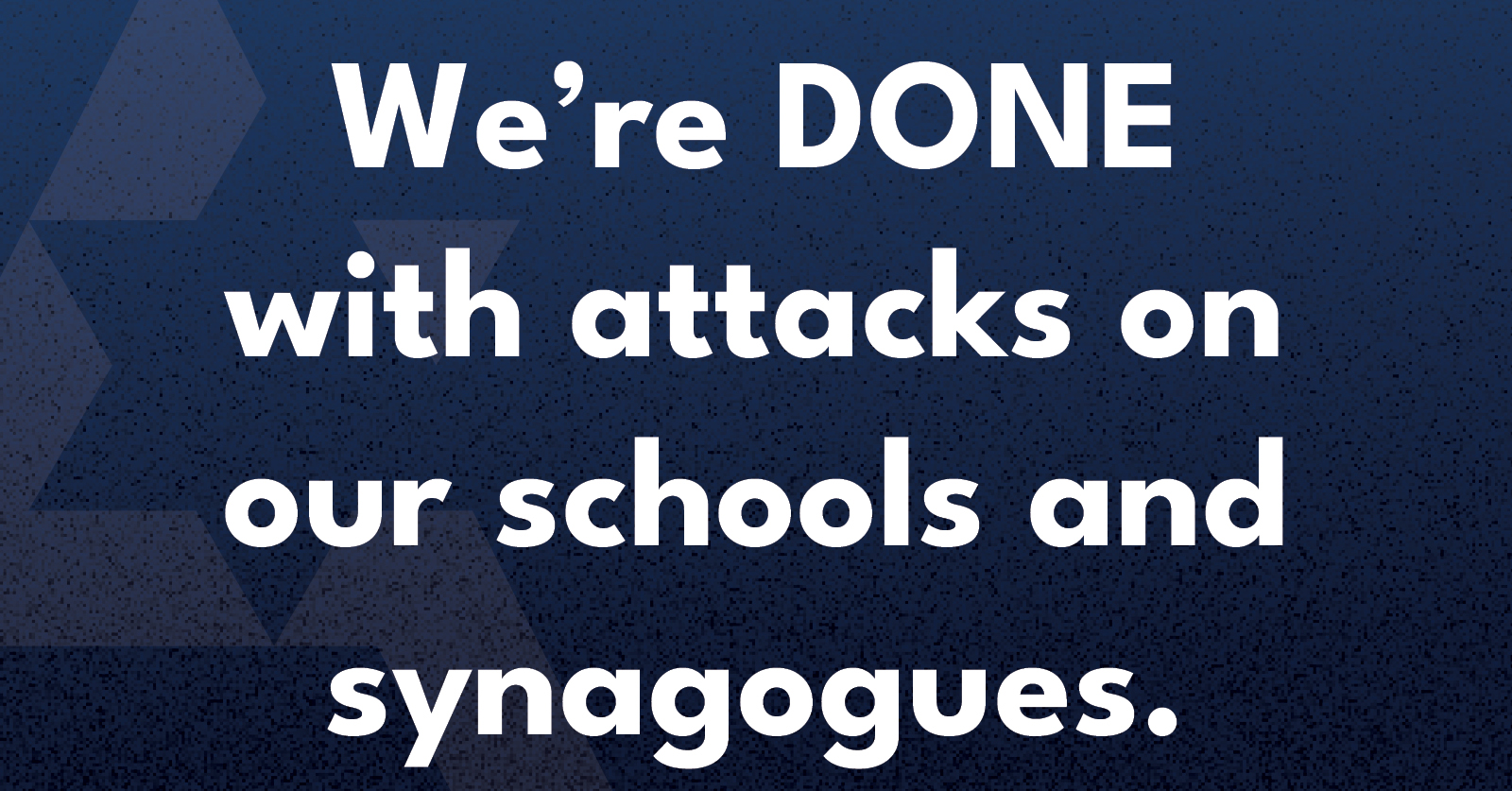
Antisemitism in Canada has moved beyond protests and politics; it is now entering classrooms and altering how Jewish children see themselves functioning within them.
A a university student I have observed the experience of my younger brother in grade eight as a Jewish student. Over the past few months, his school has been at the center of several deeply troubling incidents that have made him feel unsafe in our parks, community, and even his school. Swastikas were drawn around the community, in parks and ponds. Additionally, an older man, who claims to be a pro-Palestinian influencer, stood outside his predominantly Jewish school wearing a keffiyeh, filming a video which then circulated between students on TikTok.
This same man later showed up to our local Jewish community center in keffiyeh to allegedly watch his son play basketball where my brother and many of his classmates go for their lessons, basketball games, and Jewish events. These moments made him and his peers feel watched and targeted just for being Jewish. Local political representatives condemned the incidents and raised awareness about antisemitism, but the fear among students didn’t go away. The feeling of being targeted for simply existing has been taught to my brother, something my parents had tried their hardest to escape from.
Most recently, my brother was chosen to represent his school at a regional science fair. When one of the judges arrived wearing a keffiyeh, he froze. For many, including my brother after the incidents he has faced, the keffiyeh represents a political message. But even more so for my younger brother, it is tied to the fear and intimidation he had already experienced. He felt nervous, distracted, and unsure of how to act.
This is not about silencing political expression. It is about a child who came to share his ideas and left feeling uncertain and afraid. It is about the atmosphere forming in Canadian schools, where Jewish students are being made to feel targeted and unwelcome.
His school made an effort to address the incidents, but the impact is lasting. Posts on social media, much can be very vague at times about inclusion cannot fully undo the feeling of being singled out. A kind word from a teacher does not erase the fear that builds when threats are left unspoken but deeply felt.
I am writing this as a sister who watched her younger brother lose a moment that should have been filled with confidence and pride. He deserved to feel safe. So do all Jewish students in this country.
Moving forward, schools must take concrete steps to protect all students. Antisemitism cannot only be addressed when it becomes violent or overt. It must also be recognized when it appears as intimidation, symbolic targeting, or political messaging that creates fear among students. Children should never have to question whether they are safe in their own classrooms or community spaces.
Events that are meant to support and celebrate students must remain focused on them. Individuals who feel the need to bring political symbols or messages into school grounds or children’s events should not be welcomed in those spaces. Schools must make it clear that their environments exist to support learning, safety, and inclusion, not to host agendas that can intimidate or isolate students.
Administrators and educators must develop clear guidelines for identifying and responding to antisemitic behavior in all its forms. This includes strengthening security measures, offering ongoing staff training, and engaging directly with Jewish families to understand their concerns. Inclusion is not a one-time statement. It is a responsibility that must be reflected in everyday decisions and actions. No child should ever feel unsafe or unwelcome because of their identity.
The author is a Campus Media Fellow with HonestReporting Canada and Allied Voices for Israel who lives in Toronto.
